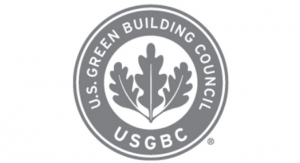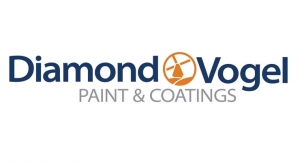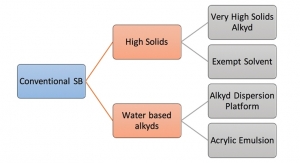Kerry Pianoforte, Editor11.11.19
This month’s feature article focuses on the exterior architectural coatings market. Experts from PPG and AkzoNobel offer their insight into the latest trends and technologies for both residential and commercial exterior coatings.
According to Adroit Market Research, the global exterior architectural coatings market size is projected to surpass $29 billion by 2025. This is mainly being driven by increased demand for paint and coatings in the construction industry. According to the report, demand for architectural coatings will be fueled by the healthy growth in residential construction spending, particularly in developing regions.
The waterborne coatings segment was valued at $15.89 billion in 2017 and is expected to maintain its popularity in the years ahead as consumers seek safer and more sustainable solutions.
Increasingly stringent regulations by EU Commission and Environmental Protection Agency (EPA) affecting VOC content in coatings has also led to the adoption of green technologies and bio-based materials for architectural applications, thereby driving the waterborne coatings demand over the forecast period.
In line with a continued focus on sustainability, users of exterior coatings for both private and commercial structures are looking for products that meet green building specifications such as LEED standards, the most widely used green building rating system in the world.
“In today’s competitive landscape, it is important for professionals to offer and use low-volatile organic compound (VOC) products, as the environmentally conscious movement is here to stay,” said Jenny Burroughs, PPG associate product marketing director. “Green practices have a permanent place in the commercial landscape and we are seeing increased use of low and zero-VOC products in the residential space by professional and do-it-yourself painters (DIY) alike.”
“From a sustainability standpoint, we recognize that cities and buildings offer great potential for the shift towards a carbon-neutral economy,” said Rinske van Heiningen, AkzoNobel director of sustainability. “We’re an industry leader in developing products and technologies that are helping to create more green buildings. The majority of our products are used in the buildings and infrastructure sector. It means we have a vital role to play in making cities and communities more sustainable.”
Green buildings that benefit from AkzoNobel’s sustainable products include: 30 Hudson Yards in New York, U.S.; Shanghai Tower in China; the Royal Children’s Hospital in Melbourne, Australia; Gardens by the Bay, Singapore, Solar Innovation Center, Dubai; and the AkzoNobel Center in Amsterdam, the Netherlands.
According to Adroit Market Research, the global exterior architectural coatings market size is projected to surpass $29 billion by 2025. This is mainly being driven by increased demand for paint and coatings in the construction industry. According to the report, demand for architectural coatings will be fueled by the healthy growth in residential construction spending, particularly in developing regions.
The waterborne coatings segment was valued at $15.89 billion in 2017 and is expected to maintain its popularity in the years ahead as consumers seek safer and more sustainable solutions.
Increasingly stringent regulations by EU Commission and Environmental Protection Agency (EPA) affecting VOC content in coatings has also led to the adoption of green technologies and bio-based materials for architectural applications, thereby driving the waterborne coatings demand over the forecast period.
In line with a continued focus on sustainability, users of exterior coatings for both private and commercial structures are looking for products that meet green building specifications such as LEED standards, the most widely used green building rating system in the world.
“In today’s competitive landscape, it is important for professionals to offer and use low-volatile organic compound (VOC) products, as the environmentally conscious movement is here to stay,” said Jenny Burroughs, PPG associate product marketing director. “Green practices have a permanent place in the commercial landscape and we are seeing increased use of low and zero-VOC products in the residential space by professional and do-it-yourself painters (DIY) alike.”
“From a sustainability standpoint, we recognize that cities and buildings offer great potential for the shift towards a carbon-neutral economy,” said Rinske van Heiningen, AkzoNobel director of sustainability. “We’re an industry leader in developing products and technologies that are helping to create more green buildings. The majority of our products are used in the buildings and infrastructure sector. It means we have a vital role to play in making cities and communities more sustainable.”
Green buildings that benefit from AkzoNobel’s sustainable products include: 30 Hudson Yards in New York, U.S.; Shanghai Tower in China; the Royal Children’s Hospital in Melbourne, Australia; Gardens by the Bay, Singapore, Solar Innovation Center, Dubai; and the AkzoNobel Center in Amsterdam, the Netherlands.


























